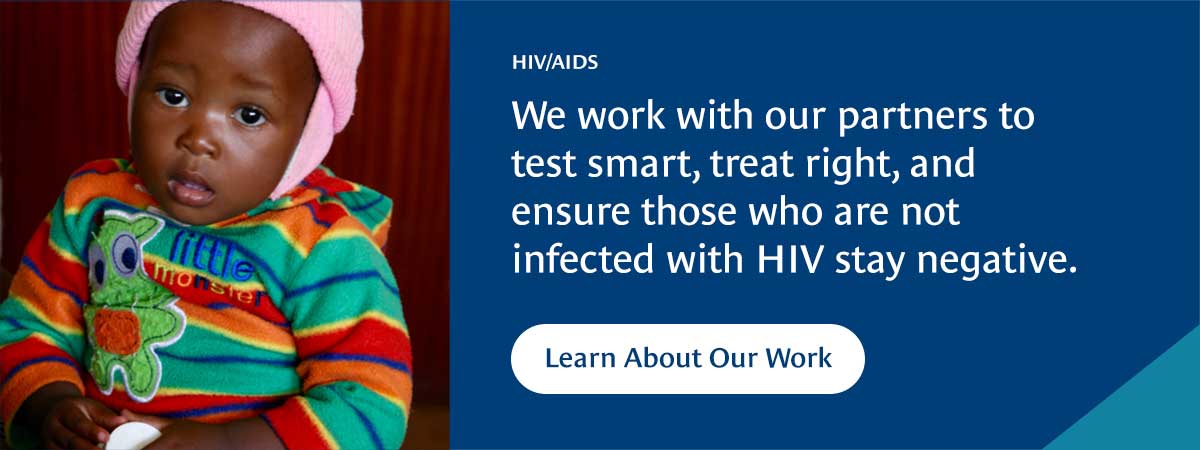Four things you should know about darunavir
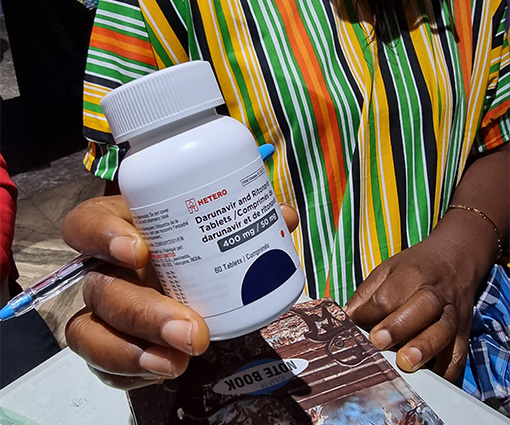
Introduction
A critical second-line HIV treatment called darunavir/ritonavir (DRV/r) is rolling out across Nigeria and Zambia – some of the earliest adopters of many countries that can now access an affordable supply of these medicines following a pricing agreement secured by CHAI and Unitaid last year. The agreement with generic manufacturer Hetero Labs has put this best-in-class treatment commonly used in high-income markets within reach of people living with HIV in low- and middle-income countries for the first time at a cost of US$17.50 per pack. A catalytic procurement is now bringing supplies to these two countries to increase demand and encourage uptake of the product across the region.
This builds on Unitaid and CHAI’s long history of negotiating breakthrough pricing agreements with HIV treatment manufacturers to expand access to quality medicines in low- and middle-income countries. Most recently, pricing deals for TLD – a combination single-pill HIV treatment – and pediatric dolutegravir (DTG) have changed the HIV treatment landscape around the world and expanded access to the highest-quality, most effective medicines for tens of millions of people living with HIV.
As DRV/r makes its way into national treatment programs and into the hands of people living with HIV, here are four things you should know about this drug.
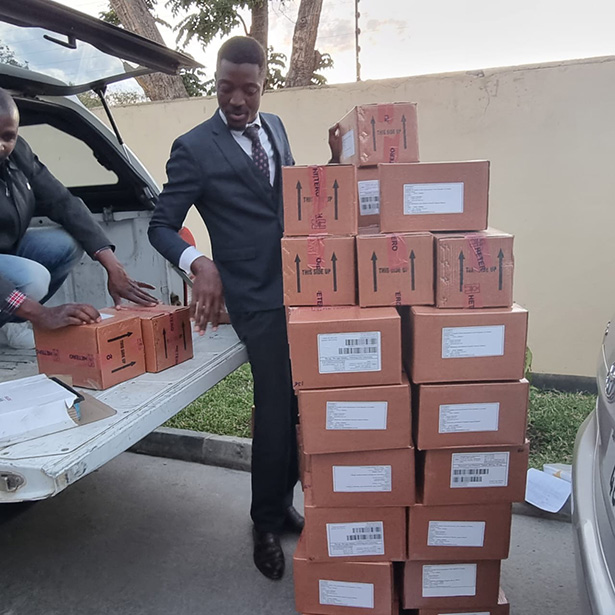
Boxes of DRV/r (400/50 mg) arrive at University Teaching Hospital in Lusaka, Zambia for health care worker and pharmacist training. Photo credit: Mwaba Mulenga
1. There has been a 15-year equity gap in access to DRV/r, although the introduction in Zambia and Nigeria begins to close this gap
Darunavir was first approved by the United States Food and Drug Administration in 2006. Although a few generic versions have been approved since then, none have been formulated as a convenient fixed-dose combination or been available at a competitive price until now. This represents a 15-year equity gap in access to optimal HIV medication between people living in high-income and low- and middle-income countries. With the introduction of DRV/r (400/50 mg) into national treatment programs in low- and middle-income countries in 2022, this gap is beginning to close, but much work remains to ensure that all people needing DRV/r can access it.
Children living with HIV are a key group still without access to DRV/r, and since September 2021 Unitaid and CHAI have been working with Laurus Labs to accelerate development of pediatric DRV/r to ensure that children who are unable to take DTG have a high-quality alternative treatment option.
2. DRV/r is the best HIV medicine for people experiencing treatment failure on DTG
The World Health Organization (WHO) recommends DTG-based regimens as the preferred first- and second-line HIV treatment option given superior clinical efficacy, convenience, and low cost. However, DTG-based regimens don’t work for everyone although they are very well-tolerated. People living with HIV need a high-quality alternative when DTG fails or has unwanted side effects.
Darunavir belongs to the class of drugs called ‘protease inhibitors’, which are commonly used in low- and-middle-income countries for second-line therapy. Lopinavir/ritonavir (LPV/r) and atazanavir/ritonavir (ATV/r) are the two most common protease inhibitors used in low- and middle-income countries today. However, DRV/r has numerous benefits over these medicines including being more efficacious than LPV/r and more tolerable than both LPV/r and ATV/r. DRV/r is also less expensive than LPV/r and requires a patient to take fewer daily pills.
WHO currently lists DRV/r as an alternative second-line treatment option. This is due to the historical lack of an affordable fixed-dose combination and not due to the relative efficacy of the medicine.
At the end of 2021, community advocates with AfroCAB released a position statement calling on WHO, national governments, and global procurement agencies to take several actions to expand access to DRV/r, including updating WHO and national guidelines to list DRV/r as the preferred second-line therapy and for national governments to begin introducing DRV/r into treatment programs.
We call on the WHO to immediately update its guidelines to include DRV/r as the preferred protease inhibitor for use in second-line. While DRV/r is listed as an alternative second-line regimen, its significant clinical benefits and recent availability at a dramatically reduced price mandate its use as the preferred second-line protease inhibitor.
– AfroCAB Community Position Statement on DRV/r 2L Access (December 2021)
With a fixed-dose combination now available and affordable, and communities calling for access, advocates expect WHO to revise guidelines to promote DRV/r as the preferred option for people needing a protease inhibitor.
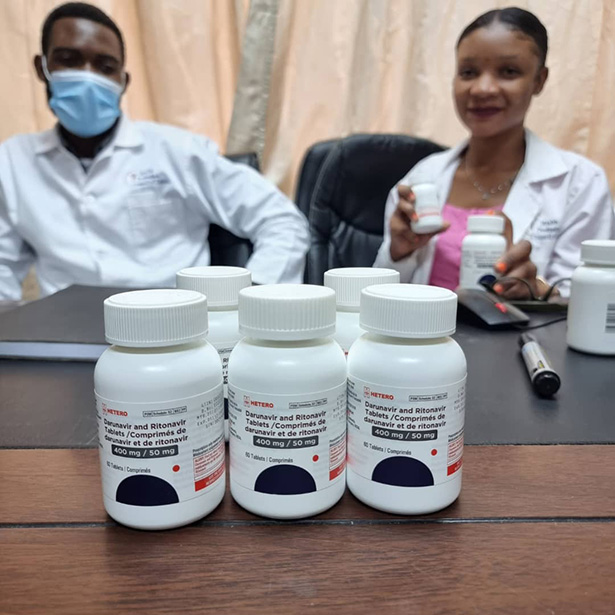
Health care workers and pharmacists pose with newly delivered bottles of DRV/r (400/50 mg) at University Teaching Hospital in Lusaka, Zambia during trainings. Photo credit: Mwaba Mulenga
3. National treatment programs in sub-Saharan Africa are now introducing DRV/r for use in HIV treatment after failure on DTG
Zambia and Nigeria are some of the first countries in sub-Saharan Africa to roll out DRV/r to people experiencing treatment failure on DTG-based regimens. With funding from Unitaid, CHAI has procured catalytic amounts of DRV/r so national treatment programs and clinicians can gain experience using this product. Initial data and learnings from introduction in these countries, including healthcare worker experiences and patient satisfaction, are being collected and will be shared later in 2022.
PEPFAR has also signaled strong support for the introduction of DRV/r into treatment programs, issuing supportive language in their 2022 COP guidance. This states that, “In the rare instances in which a patient cannot take TLD because of failure or intolerance, a regimen with DRVr is preferred, provided DRVr is reliably available at an affordable price.”
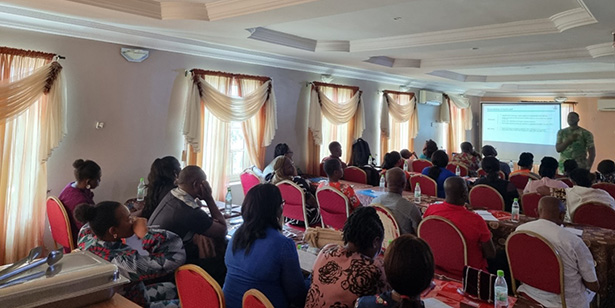
Health care workers in Anambra state, Nigeria are trained on DRV/r (400/50 mg) before beginning to enroll patients on this new optimal treatment. Photo credit: Oluwakemi Sowale
CHAI’s HIV New Product Introduction Toolkit hosts multiple resources for programs that are interested in introducing DRV/r. These include adoption-focused resources such as a product profile and clinical action memo, implementation-focused resources such as healthcare worker training slides and a prescribing algorithm, and community resources such as a frequently asked questions document.
4. DRV/r should not be saved for use in third-line HIV treatment
Because of darunavir’s previously high cost and high pill burden, it has historically been saved for use as a third-line HIV treatment. However, this new, affordable fixed-dose combination of DRV/r (400/50 mg) can conveniently be taken as two pills once per day and has been designed specifically for use in second-line treatment.
The ease, efficacy, and tolerability of DRV/r make it an optimal second-line treatment that could potentially reduce the number of people experiencing treatment failure. This could limit the need for third-line medicines, which are often expensive and challenging to source. Because darunavir is such a potent molecule it can often be reused in third-line treatment at a higher dose, so its use in second-line does not necessarily preclude its use in third-line. Finally, several other third-line options aside from darunavir are available, including etravirine, doravirine, dose-adjusted DTG, and other pipeline products.
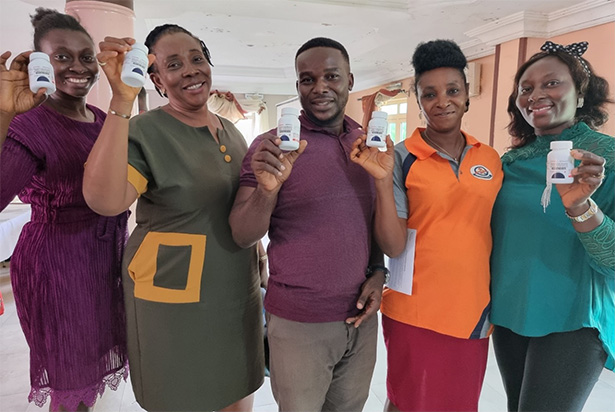
Trained health care workers from secondary and tertiary hospitals in Anambra state, Nigeria hold bottles of DRV/r (400/50 mg) after receiving their first shipment for use in second-line treatment. Photo credit: Oluwakemi Sowale





